
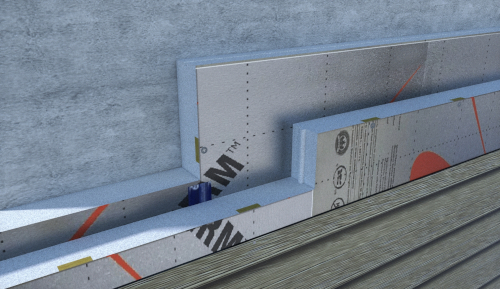
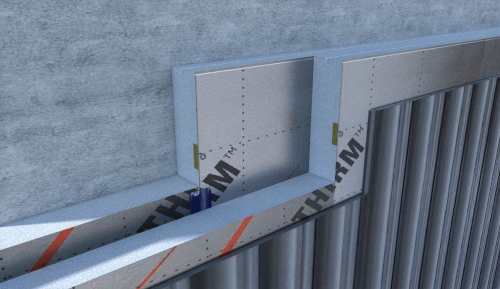
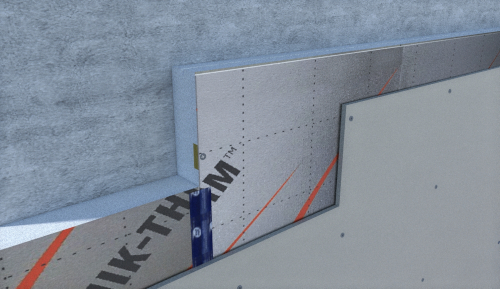
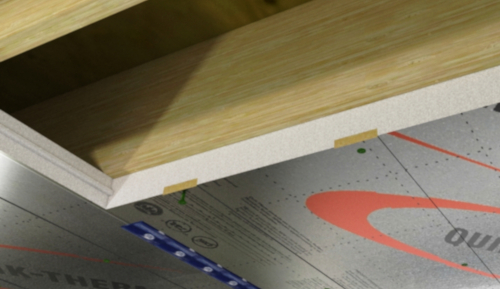
Quik-Therm Connect - Rigid Insulation with Built-In Plywood Furring
3/4" thick X 3" wide X 8′ long plywood nailing strips battens/strapping are embedded within the Connect insulation panels. The plywood battens attach directly to framing members. In-turn, cladding materials are fastened to the battens.
Connect Technical Data & Literature
T&G Connect panels are manufactured from superior closed-cell, lightweight and resilient Type 2 expanded polystyrene (EPS) covered on both sides with advanced metallic polymer facers. In one simple and effective system, Quik-Therm T&G Connect structurally attaches high performance continuous insulation and heavy claddings to walls, ceilings, roofs and floors.
Simply, quickly and intuitively, Quik-Therm T&G Connect structurally attaches continuous rigid foam insulation and heavy claddings to walls, ceilings, roofs and floors.
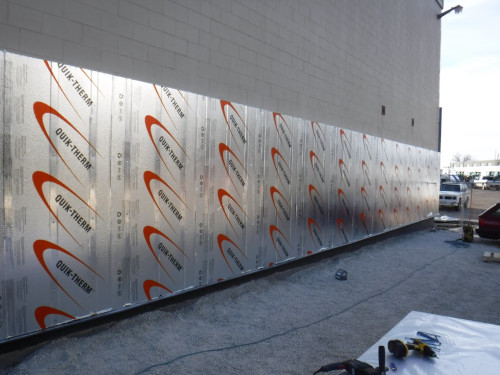
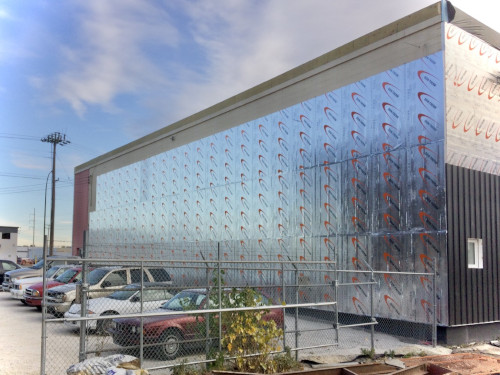
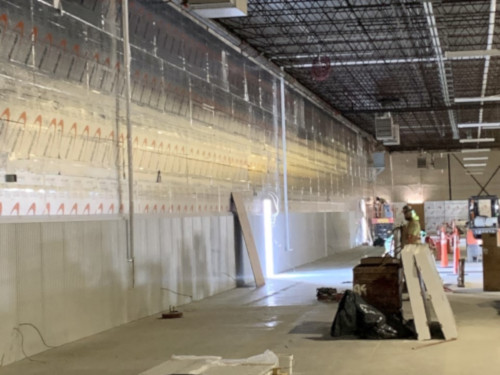
Quik-Therm was found to meet the requirements of an air barrier as outlined in Section 5.4.1.2 (Division B) of the National Building Code of Canada, 2015.
– QAI Laboratories
Quik-Therm Insulation Solutions Inc. has undertaken a program of full scale thermal performance testing to ASTM C1363-05 Standard Test Method for Thermal Performance of Building Materials and Envelope Assemblies.
– Mark Lawton, Senior Building Scientist, Morrison Hershfield
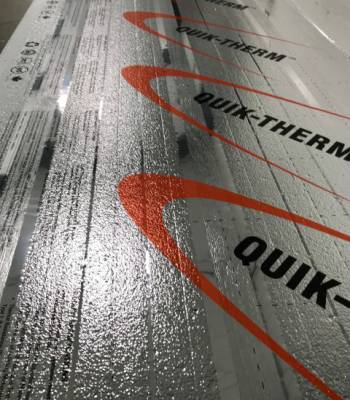

Environment. Sustainability. Health.
Quik-Therm’s expanded polystyrene (EPS) core comprises of 98% air captured within a 2% cellular matrix. Food grade quality polymer facers are heat sealed to both sides of it’s core. Water used in the manufacturing process is recycled and re-used many times over. Quik-Therm will not degrade and does not contain or use ozone depleting chemicals. Quik-Therm may contain up to 15% pre or post consumer recycled EPS. EPS has received an A+ rating for most environmental matrices.
What are the best applications for Quik-Therm Connect?
Empty cavity walls (all insulation on the outside). Interior and exterior masonry (concrete) walls. Interior vaulted ceilings. Top side roofs (over substrate). Top side of concrete floors.
Is a double vapour barrier created by adding QT Connect to a wall with a poly vapour barrier and batt insulation? Can double vapour barriers be designed to work?
Yes & Yes. Connect is effectively impermeable. Therefore when designed in conjunction with an interior poly vapour barrier, a double vapour barrier is created. However, walls with double vapour barriers can work well. The key is to ensure the thickness of Connect is sufficient to keep the wall cavity warm. By doing so, the risk of condensation is significantly reduced. The thicker the Connect, the warmer the cavity. Thicker is always better.
Is an exterior substrate required for Connect framed wall assemblies?
Connect can be installed directly over wood or steel framing members (without sheathing) up to and including two stories in most Canadian jurisdictions. Please check with local building codes.
What benefits do QT’s reflective polymer facers provide?
- Increase durability. QT does not easily chip, crack or break.
- With proper detailing (taping), some QT products meet code compliance as part of an air, vapour and/or radon barrier system.
- Enhances the Effective R-value of assemblies.
- Provides an additional WRB as outlined by Canadian building codes.
Is Quik-Therm (QT) ASTM C1363 effective R-value testing accepted by the National Building Code of Canada (NBC)? Can Professionals use QT test results in their designs?
Yes and Yes. As well, based on its tested effective R-value, QT is eligible for government energy savings initiatives such as the Manitoba Hydro Power Smart Program and other programs.
Why did Quik-Therm choose the Effective R-value test method ASTM C1363, while other insulation manufacturers typically test to the nominal R-value standard ASTM C518?
Quik-Therm tests to both ASTM C518 (labeled R-value) and ASTM C1363 (effective R-value). New Canadian energy codes mandate the use of effective R-value. Since effective R-value is now the standard for R-value performance, QT chose the test method based on the most recent standard.
Can ASHRAE effective R-values for cavity filled walls be added to QT effective R-values?
Yes. Example: ASHRAE Table A3.1D states R-12 fiberglass with wood studs performs effectively at R-9.8. As per C1363 test results, 2” QT performs effectively at R-13.2. Combining the ASHRAE fiberglass results and QT results together = Ru-23. To support Ru 23, QT tested this blended wall assembly to C1363. Result R-23.1. Note: The fiberglass insulation was R-13, not R-12. Potential discrepancy is less than R-1.
Does ASHRAE support the use of Effective R-values?
Yes. ASHRAE 90.1, Table A3.1D (as an example) lists Effective R-values for insulation and framing in above and below grade walls.
What is the nominal R-value for QT Type 1, Type 2 & Type 3?
Type 1 (T1) = R-3.81 / Type 2 (T2) = R-4.18 / Type 3 (T3) = R-4.4
Does QT off-gas and/or lose R-value over time?
No. QT has no Long Term Thermal Resistance loss (LTTR).
